Metamorphosis of Insects Part 3
Martha O'Kennon
We have talked about metamorphosis. You may wonder, Why is that so important when we are studying Biodiversity? Well, look at it this way. If you are trying to document the creatures that you see from day to day, it's important to be able to recognize them in the many forms they take.
Suppose you are looking for a Brown Marmorated Stink Bug. You probably know it well, because it's in everyone's book of villains because of the damage they may do to fruit crops.
Here (picture 1) is an adult BMSB. It has a pretty bland brownish-black outer shell. The one thing that gives it away is the antennae. I don't know another Stink Bug with that pattern of (starting at the tips) dark, Long Light, dark, Little Light, dark, dark, etc. Now we want to see the colors or patterns of the nymphs after they hatch from the eggs (picture 2). I can't see the antennae with any white on them at this stage. In fact, they look reddish.
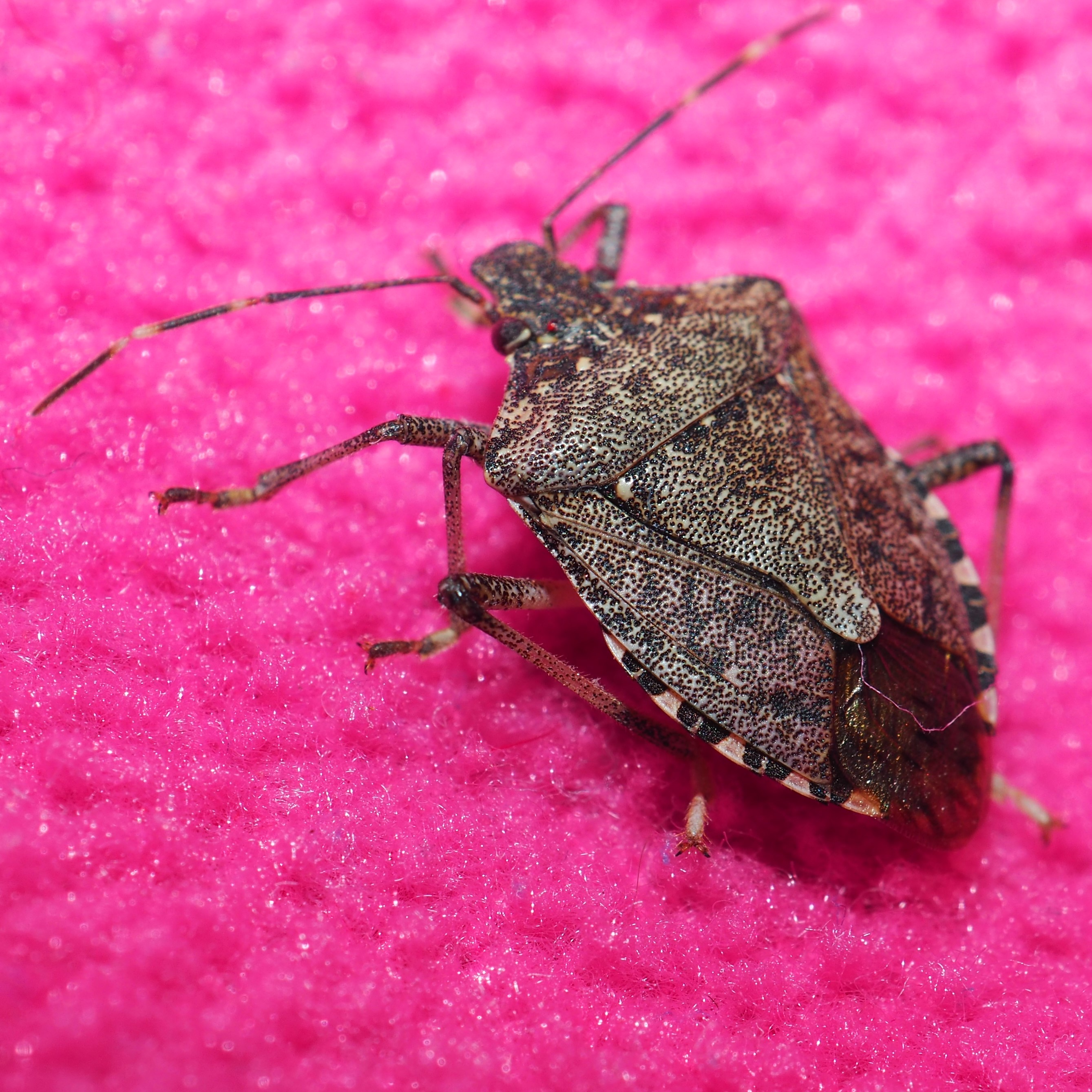
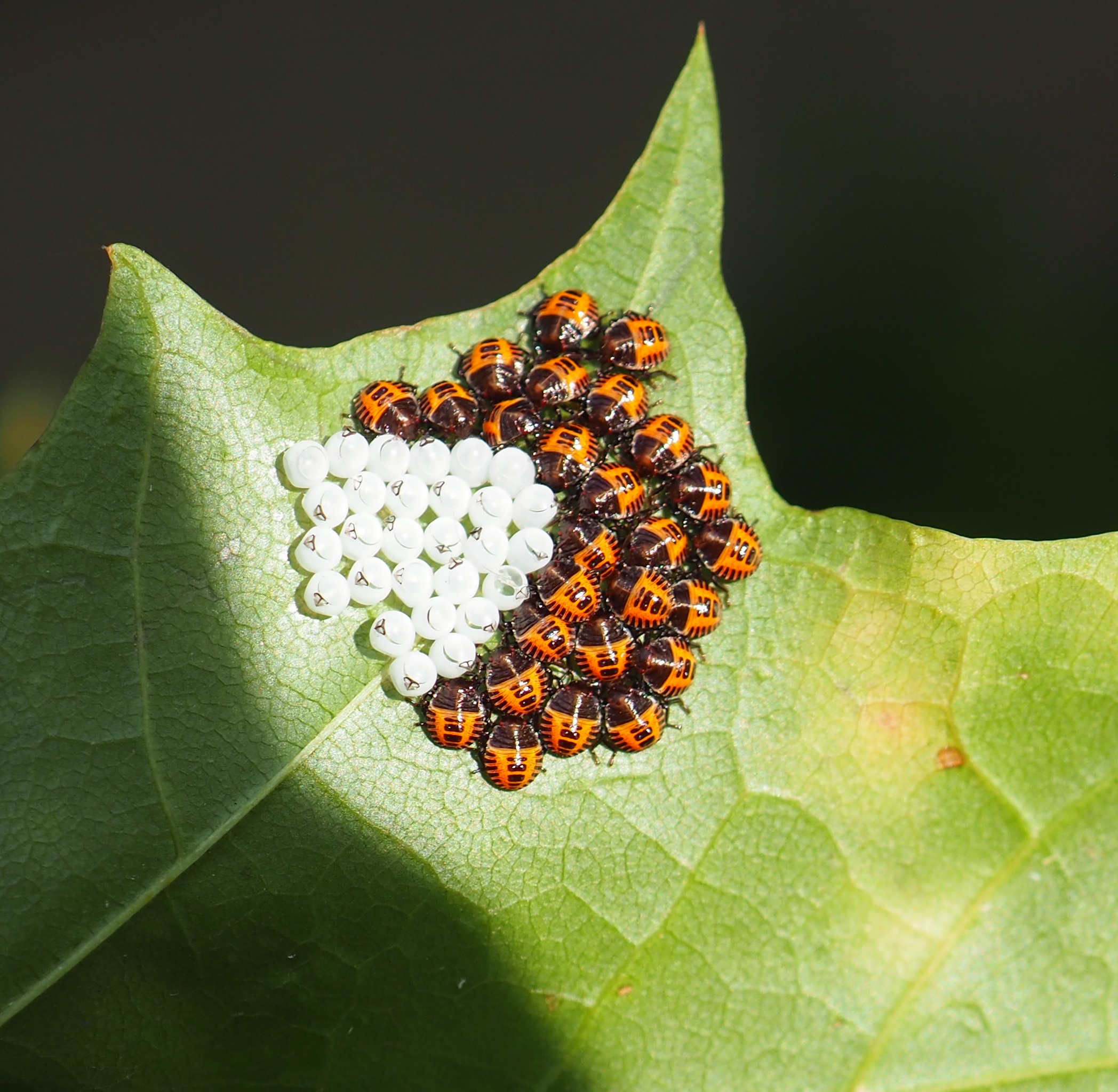
Here is an early-ish instar - red and black, much like the nymphs that had just emerged from eggs. Then the next instar (pictures 2 and 3), which still shows its reddish past, both from the same day.
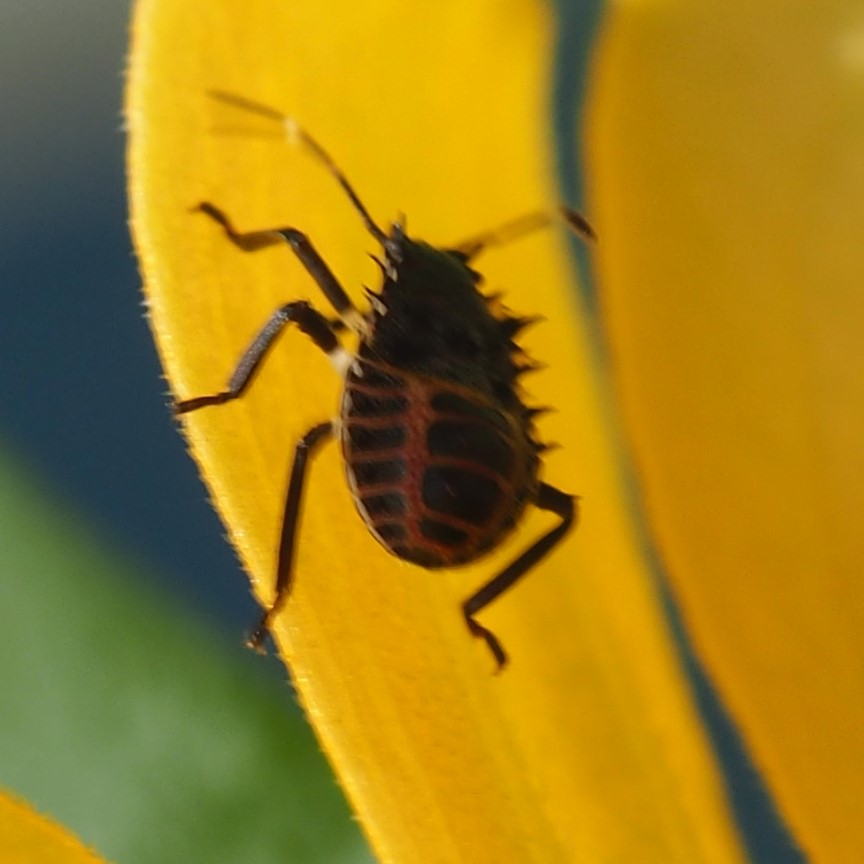
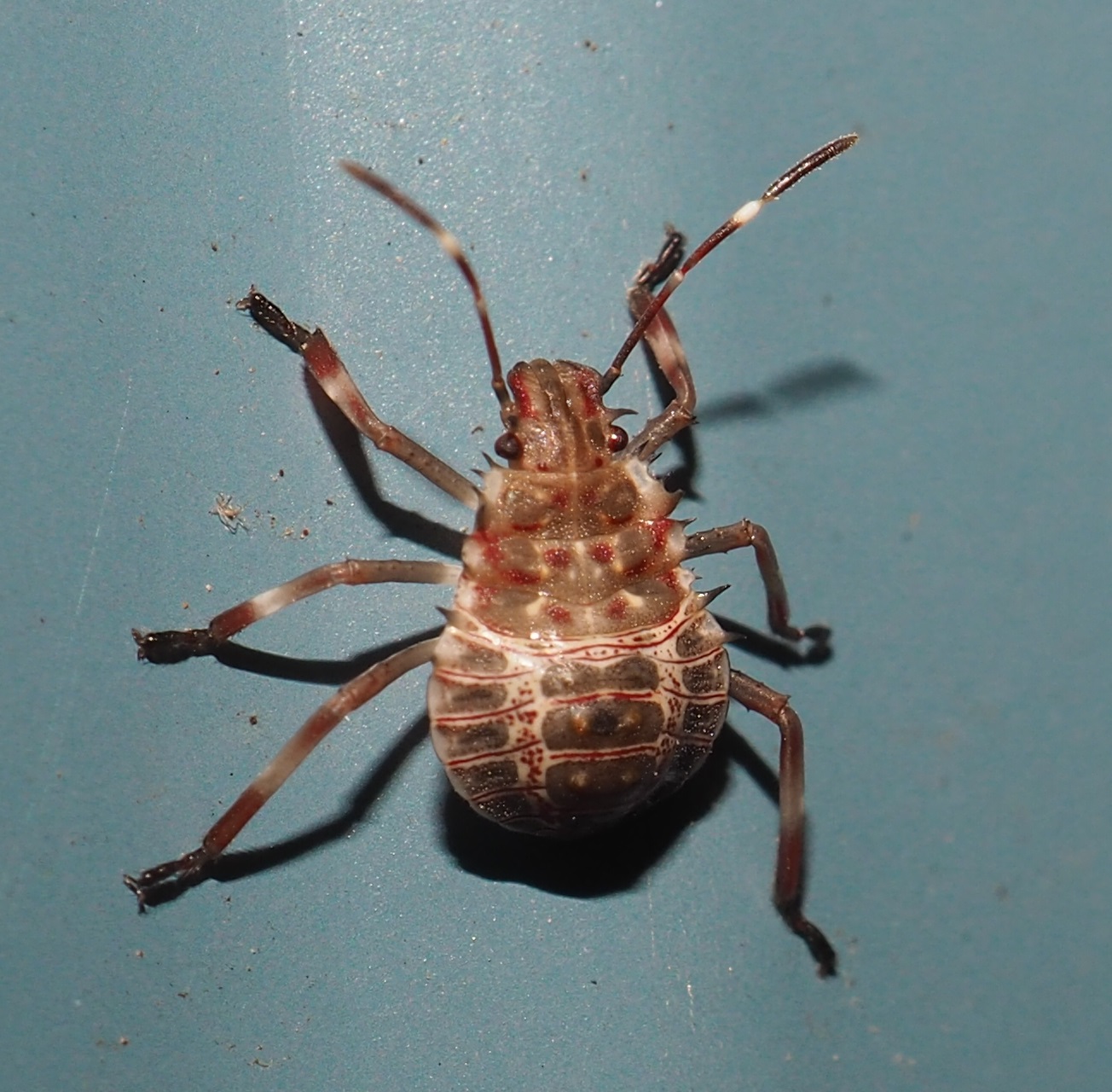
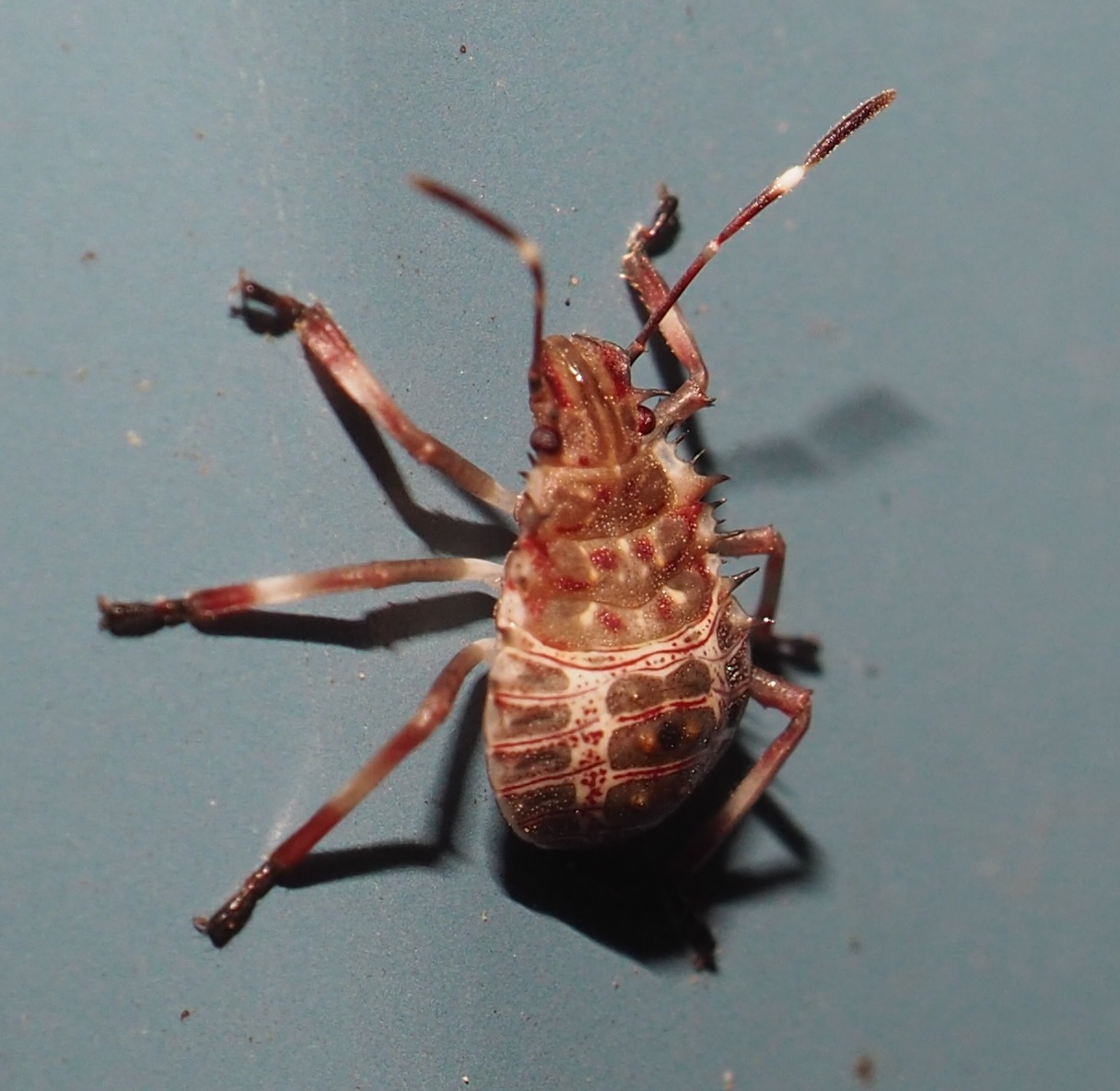
Here are three nymphs in the next instar or two. You can see the increasing length of the wings, and also how the reddish color from the preceding instar begins to turn to brown.
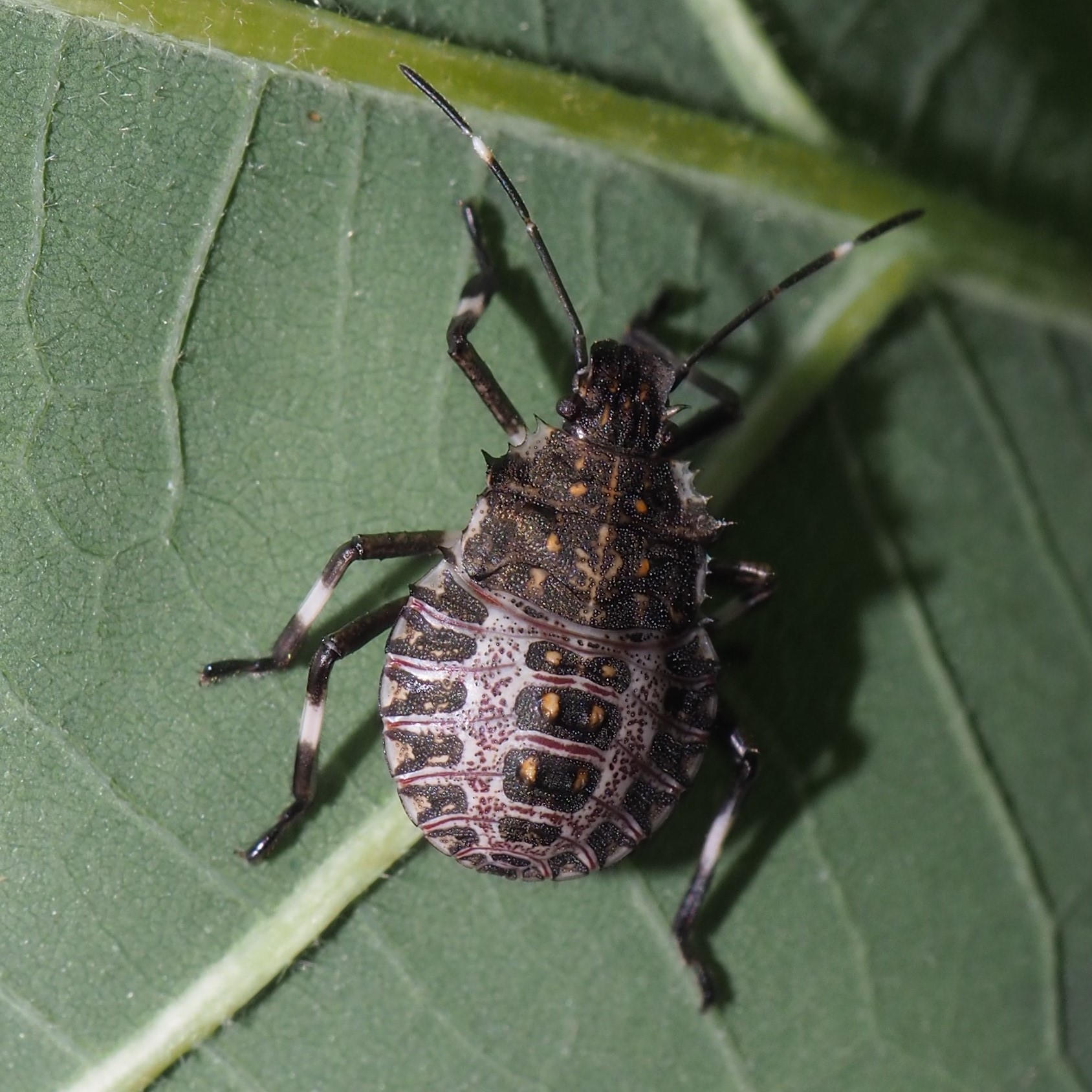
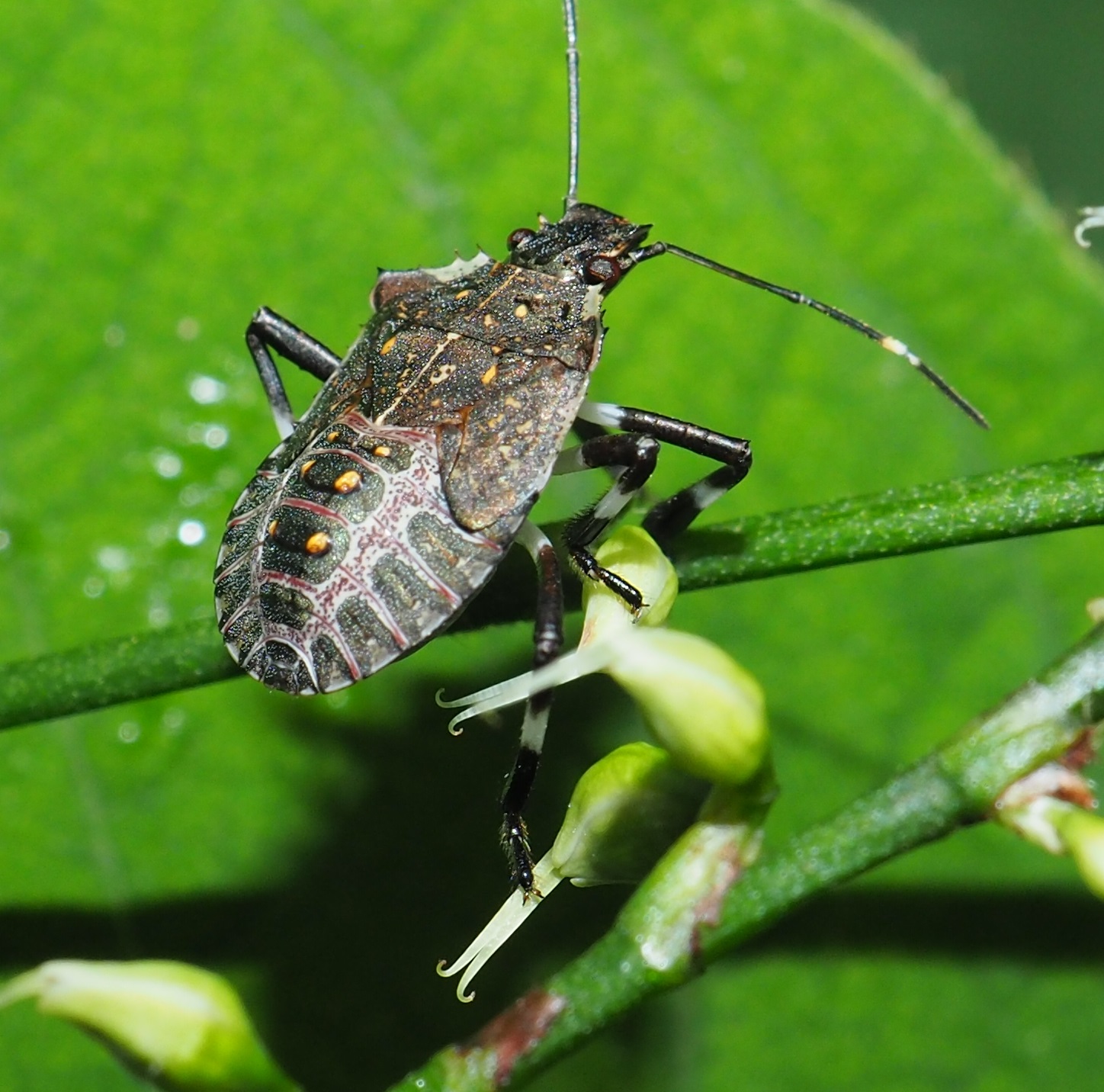
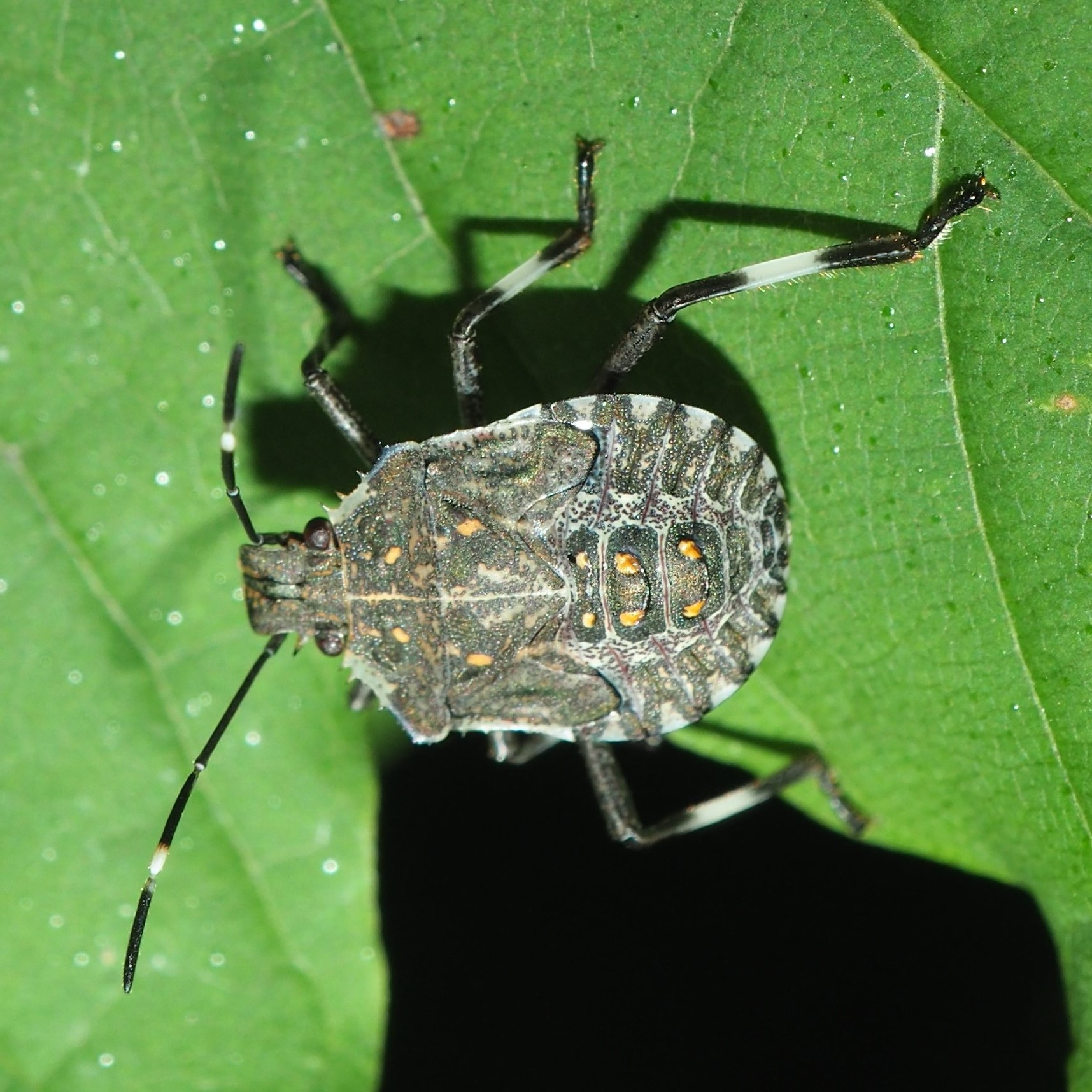
Finally, our adult. The last picture shows the underside of the BMSB. A spider is holding him that way.

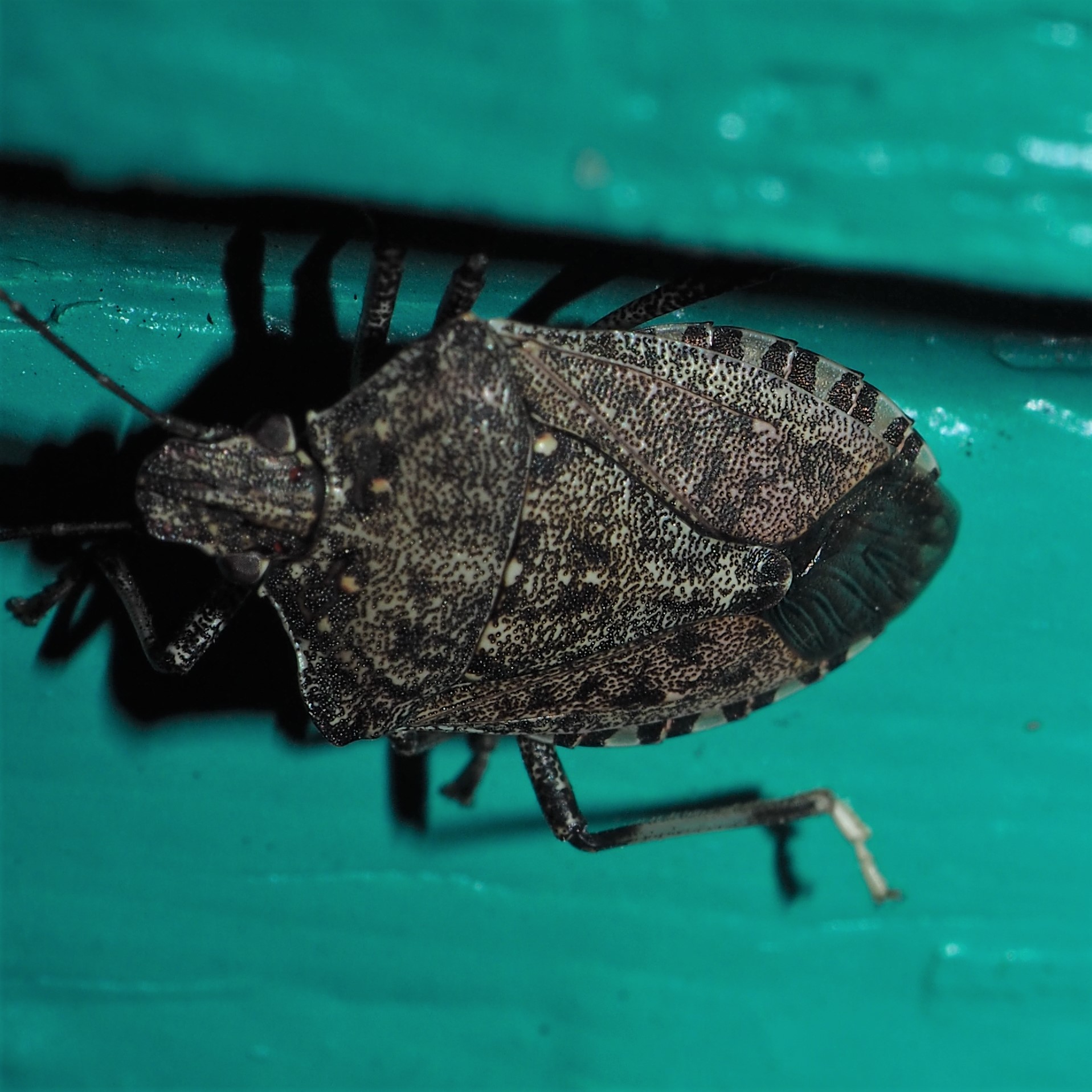
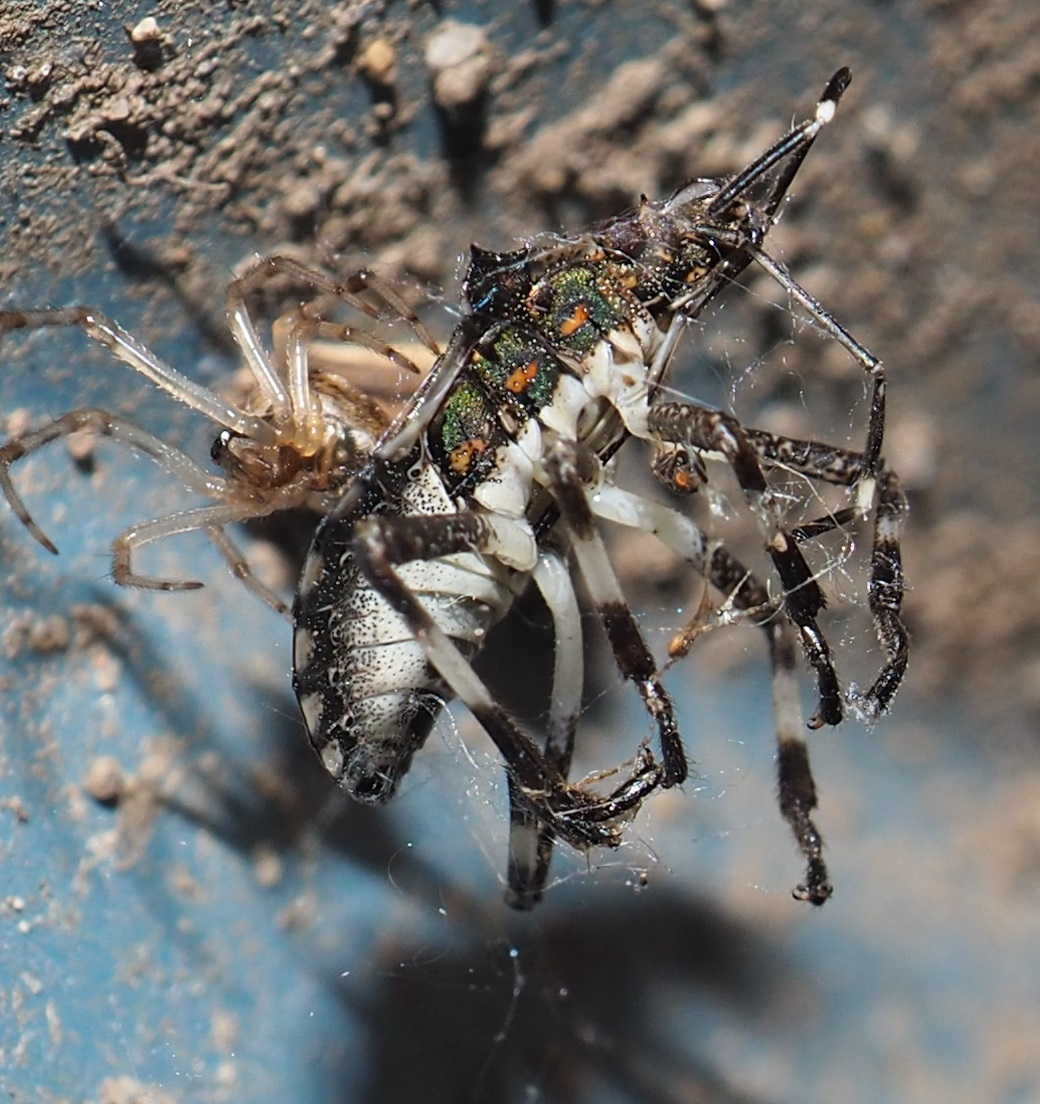
In the summer of 2020, I was visiting Kathleen Seidl and admiring her lovely garden, when suddenly we spied a pile of Stink Bug eggs on a leaf of her Redbud tree. Picture 1 shows them with their newly hatched nymphs at 11 am; picture 2 at about 4 pm, when one has already shed its first skin. Picture 3 shows one of the babies moulting its first skin.

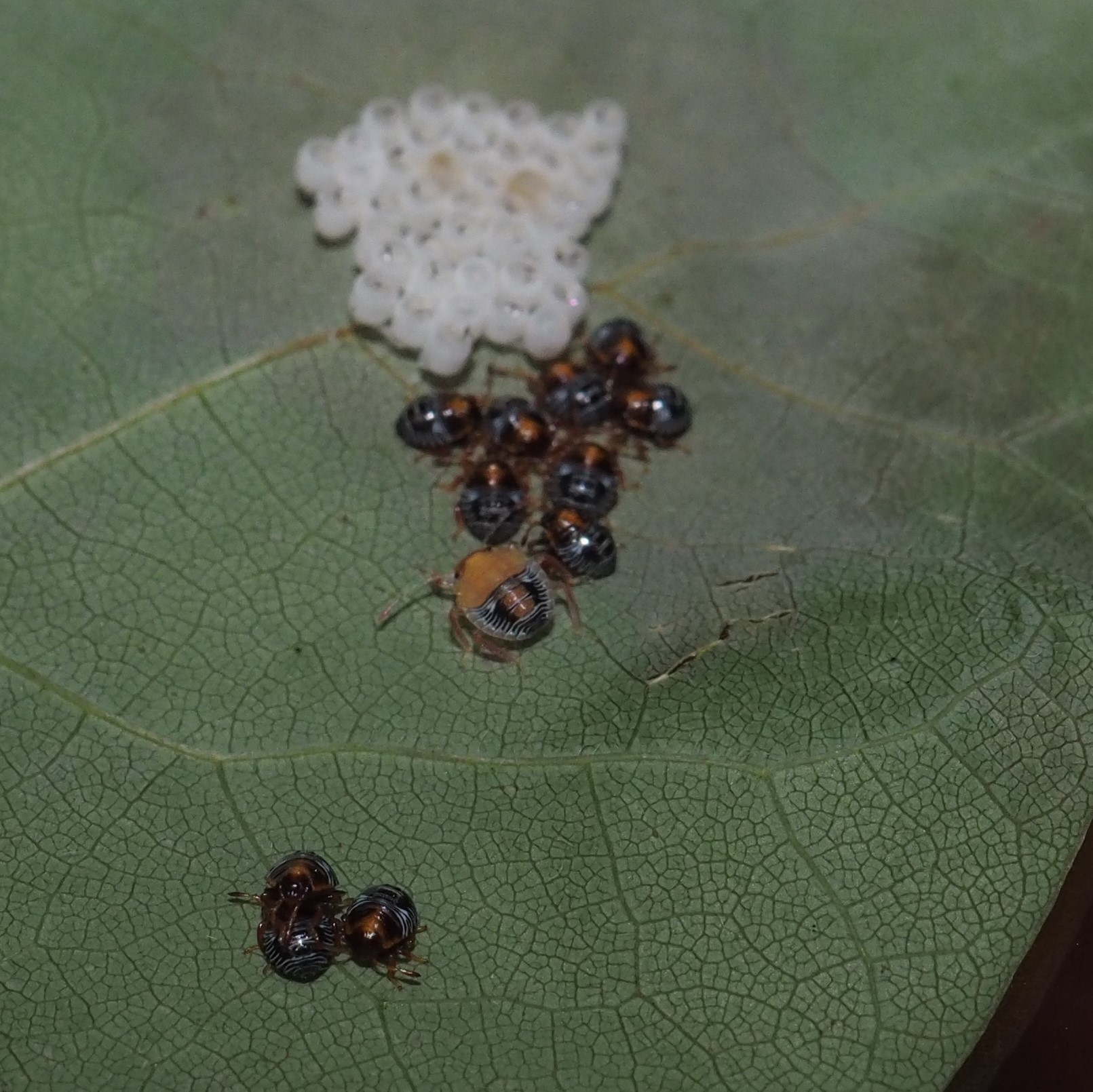
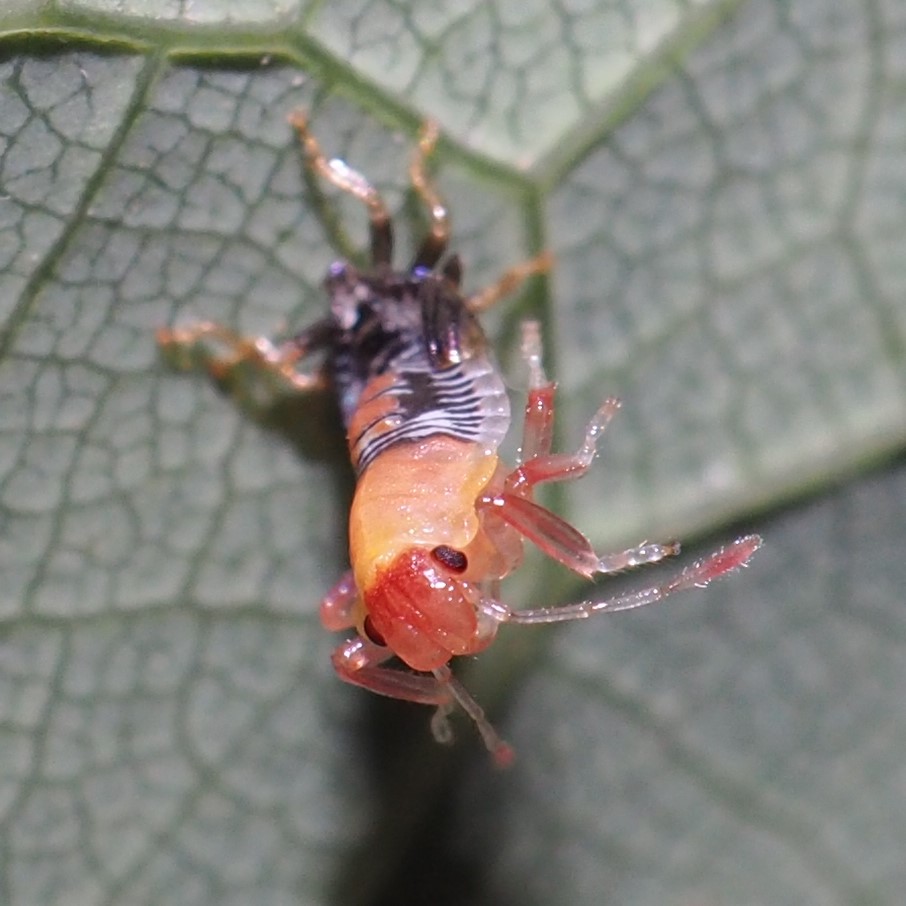
Here they are, climbing up a stem. And last, the adult Green Stink Bug!
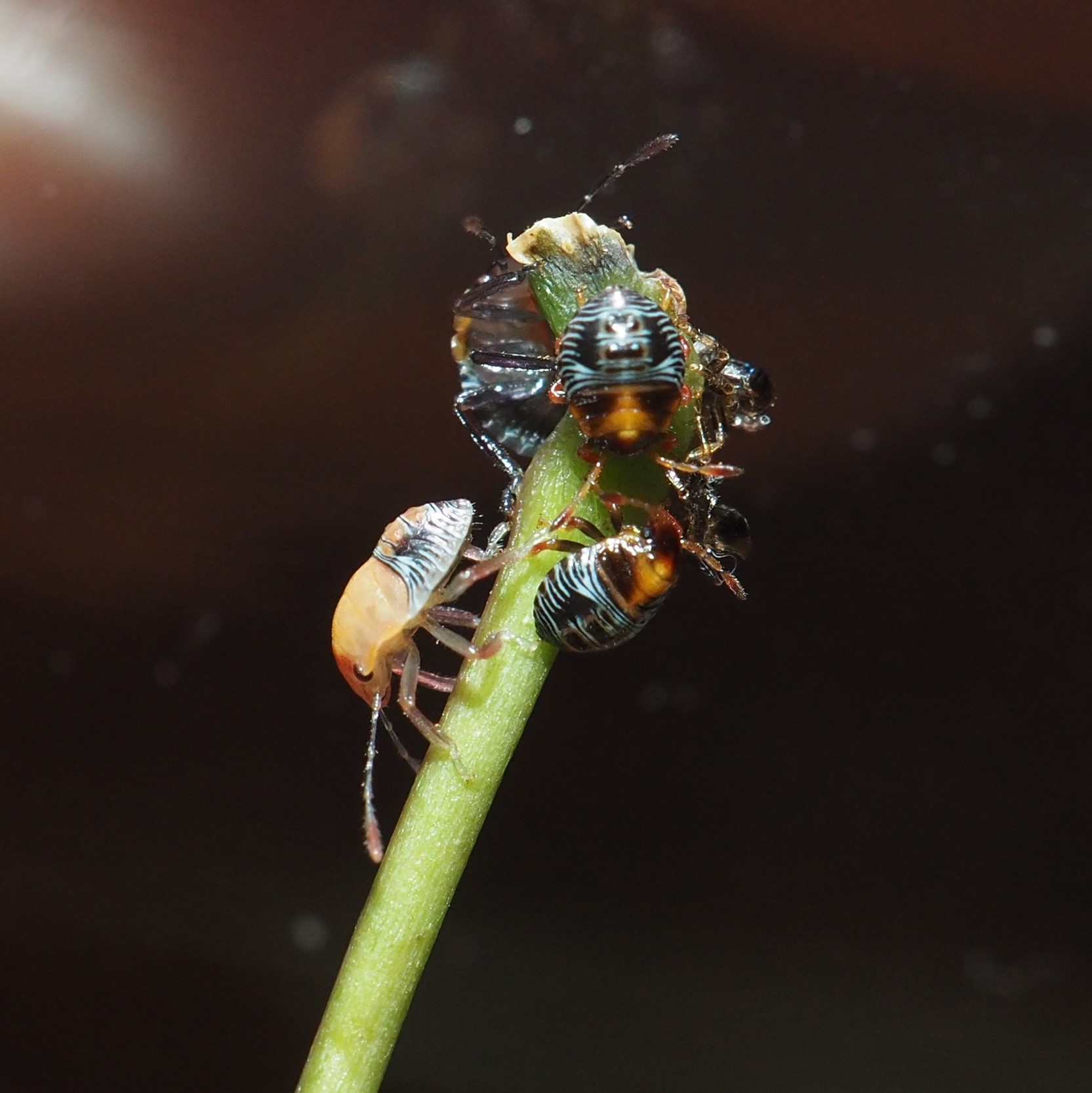
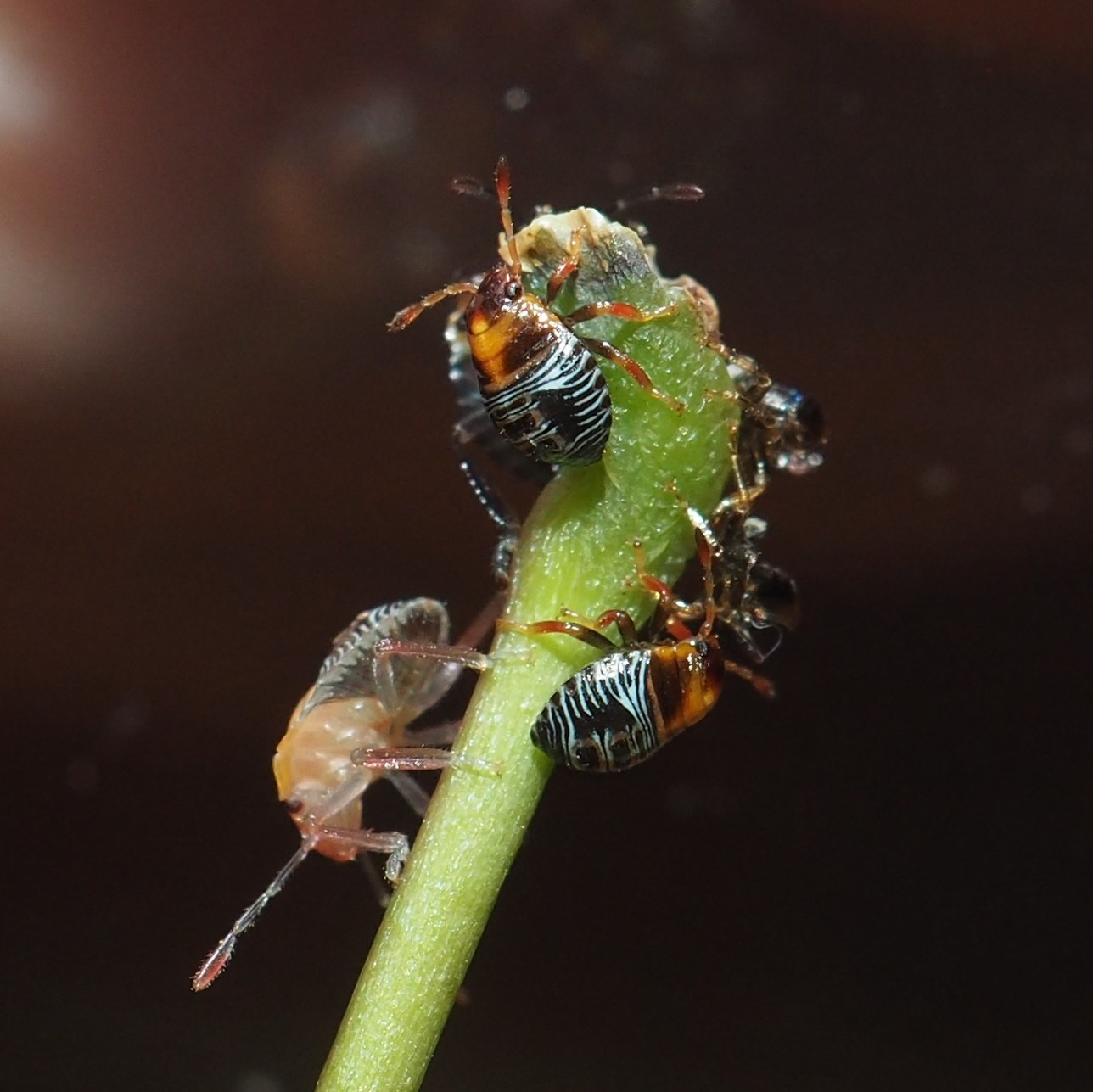
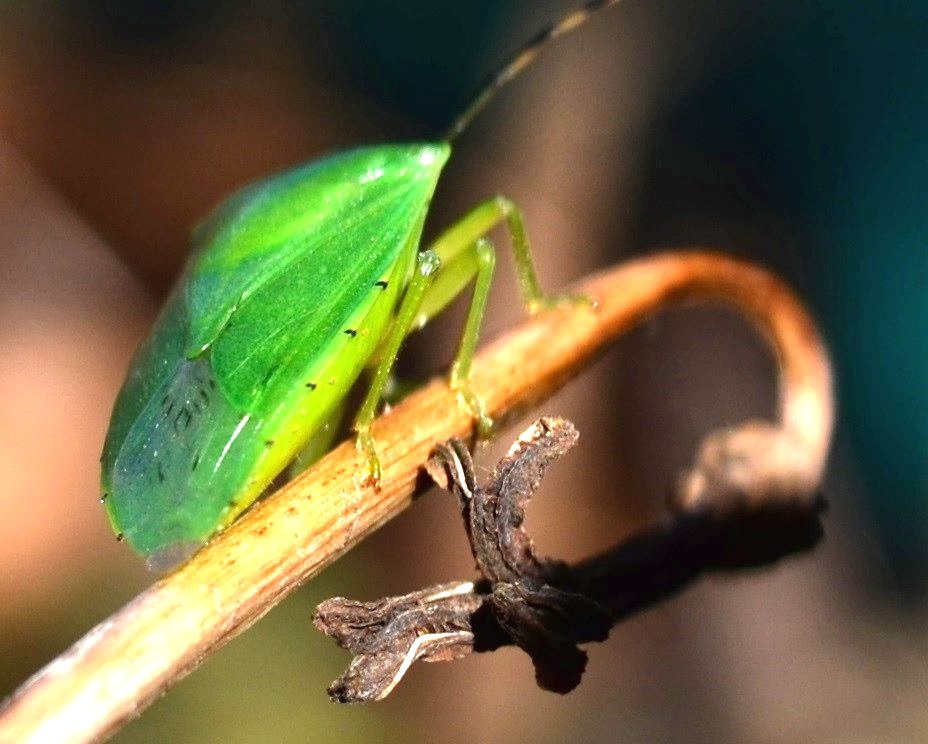
Well, I hadn't submitted the pictures I took till yesterday (January 29, 2021) and to my surprise a person named @lupoli_roland recognized them as baby Green Stink Bugs! But over the past few years I've met the GSB in various instars. I'm not totally sure if I got the orders right, but you've already see the first two instars. So here is what I think is next. If you are interested, we can work on that! Picture 1: fourth instar; picture 2: fifth. These last two were found in another source. Number 3 is one that I believe someone called a low-instar nymph of the Green Stink Bug. But then I couldn't find anywhere that suggests it any more. In fact @lupoli_roland didn't bite when I suggested it might be a low-instar nymph of the Green Stink Bug. So I found on BG a person called Andrew Meeds who just happens to frequent iNat as well. He said it looked more like a Burrower Bug than a Stink Bug. I may have already told you that I do see "White-margined Burrower Bugs" around here. So I went to Google, just plain Google, and typed in "Burrower Bug nymph" or something very close to that. Almost immediately I found a picture in an organization in
Maryland and they had a picture of a nymph as nearly identical to mine as can be photographed. And guess what they call this Bug..
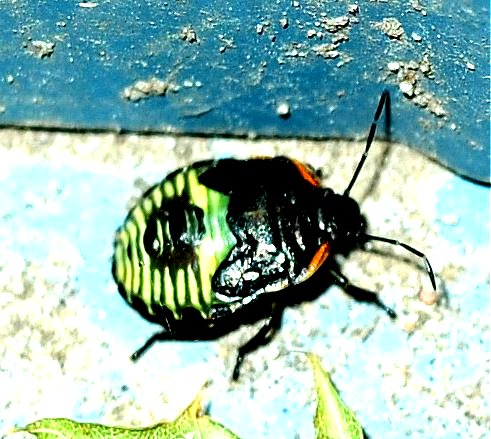
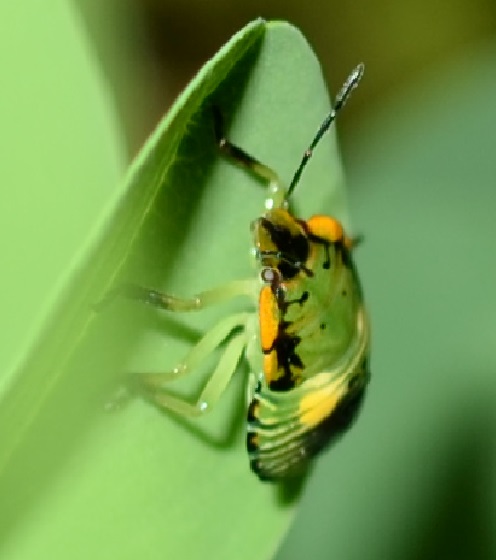
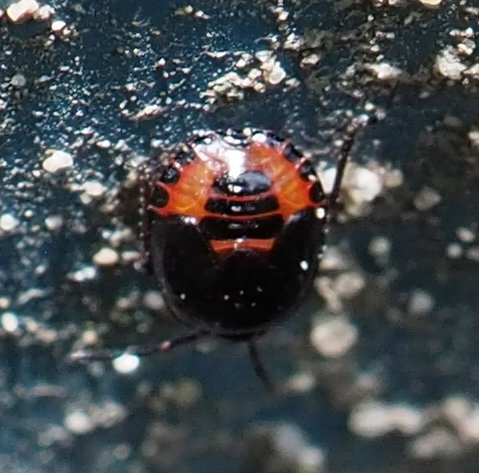
Another Stink Bug (the Twice-stabbed Stink Bug) with at least one instar that I've figured out after some guessing. First here (and second) is the Adult and Third is the nymph. I don't know which instar this is, and it doesn't look familiar, but it is a Twice-stabbed Stink Bug nymph.
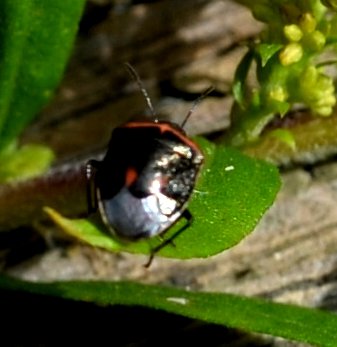
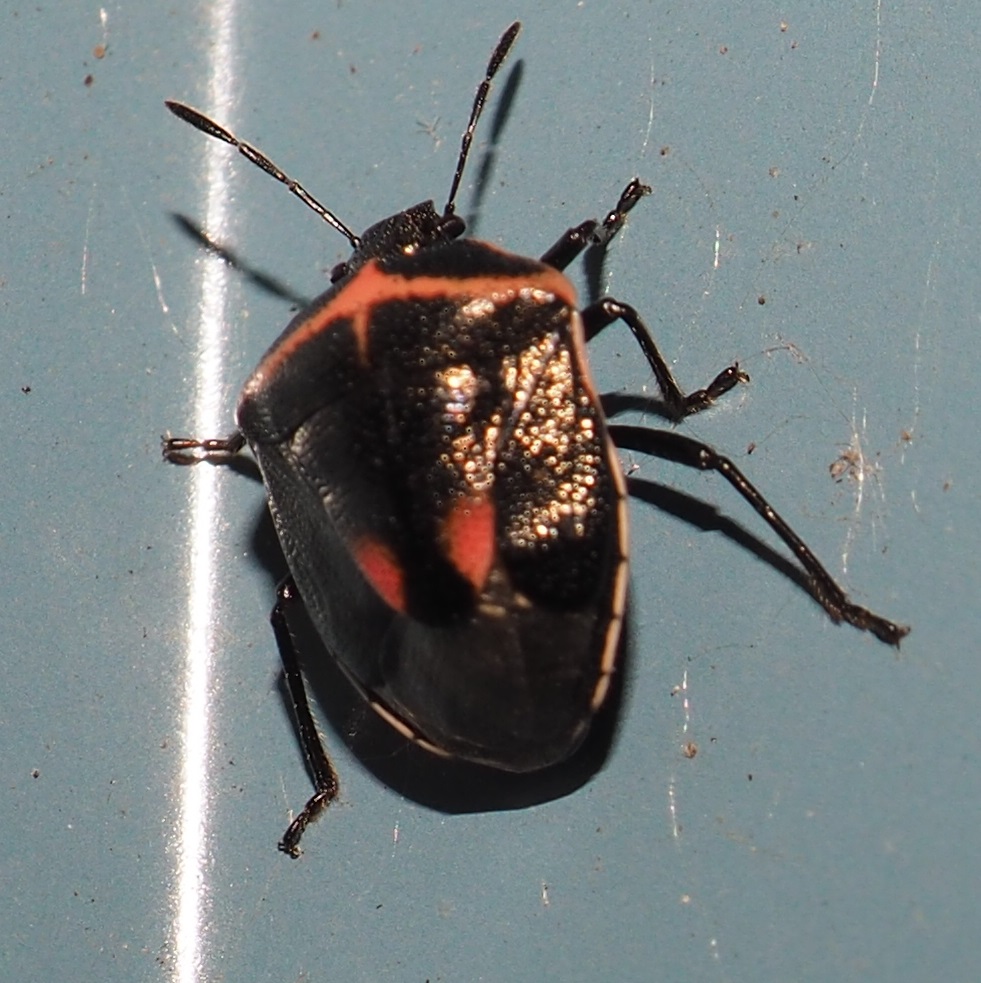
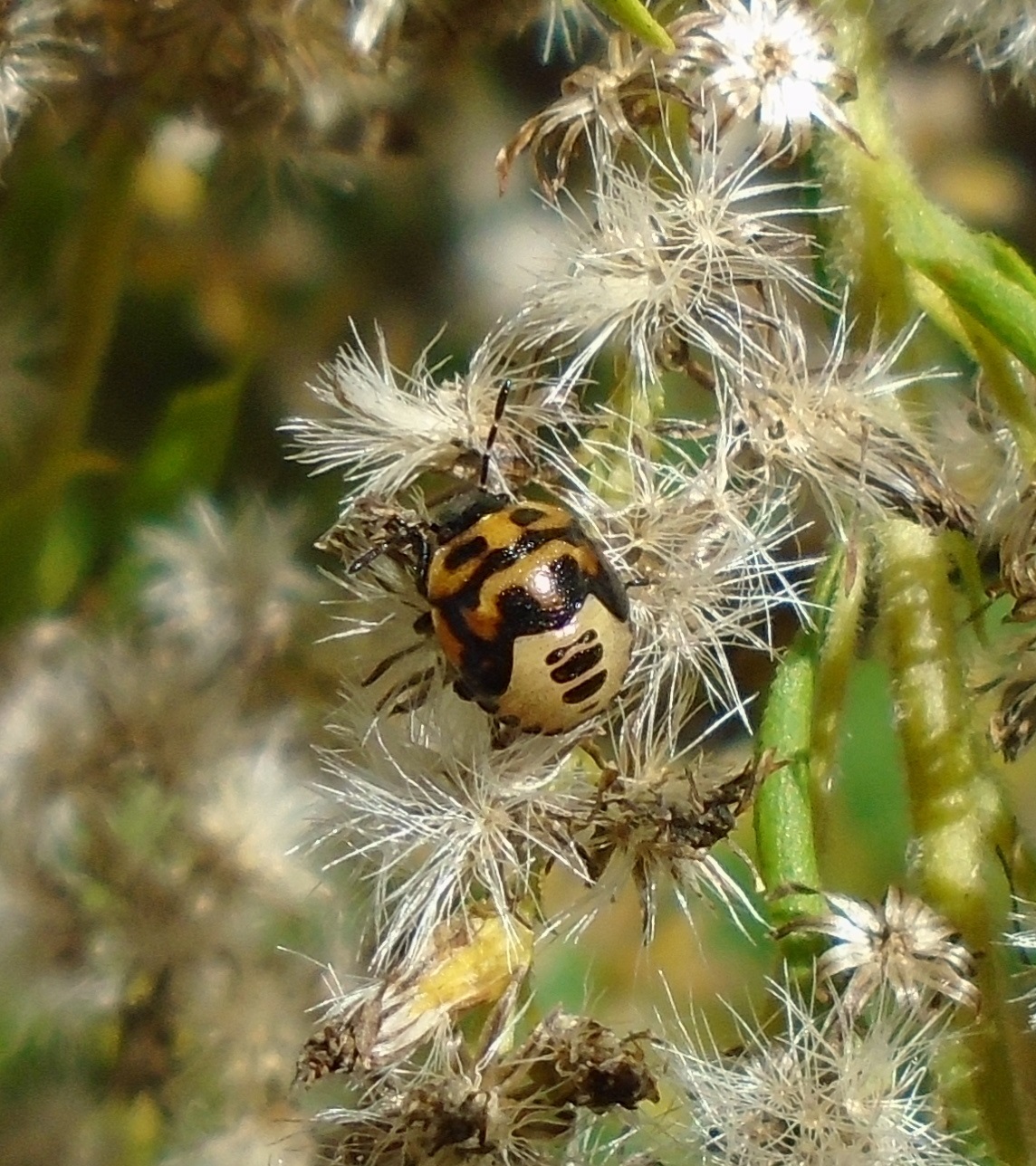
I spent several summers raising Giant Saturniid Moths from eggs to caterpillar to bigger caterpillar ... to Pupa/Cocoon ,.. Adult. If you would like to try this yourself, there are clearing houses for purchase of batches of eggs. When you receive them, you should put them into a container with a few leaves of their choice. For Polyphemus, their tree leaf of choice is Red Oak. This was lucky for me since the house next to me had planted a red oak tree out in front. They also said they didn't mind my coming with loppers to get batches of leaves as that saved them some leaf-raking in the fall. A lucky choice of neighbors! Anyway, the container had to have air, so I covered it with some lacy fabric and tightened it with a rubber band. Once the eggs hatched, I was able to cover the box with a lid (this was ok since I opened it morning and evening to remove the poop (frass) and stripped leaves and supply some fresh leaves. Picture 2 shows early instar caterpillars. Picture 3 shows caterpillars from 6 to 8 days old. Picture 4 shows a larger one of later instar.
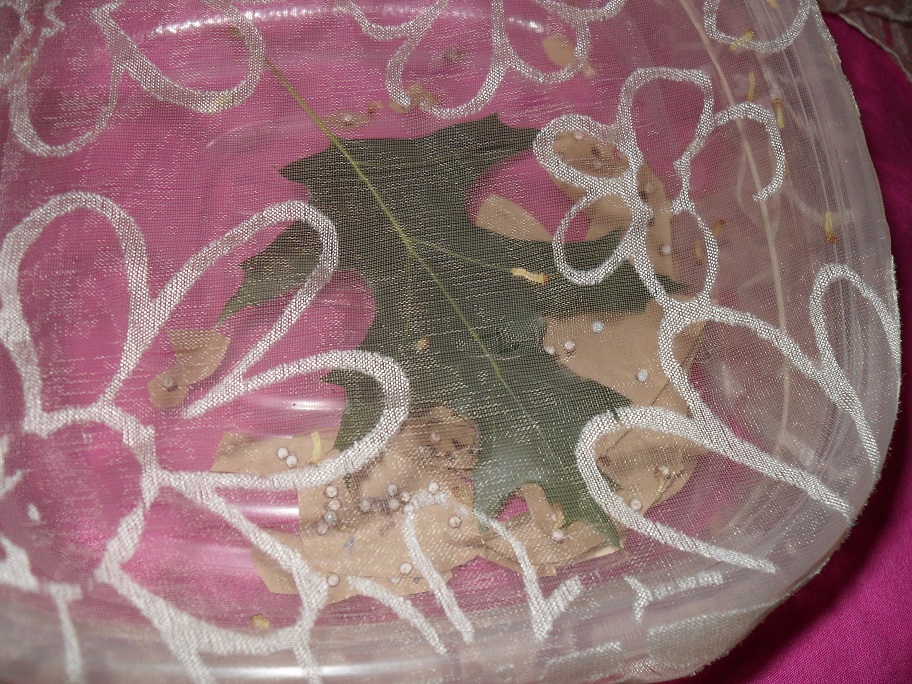
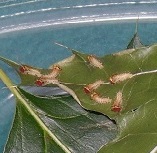


You can see from comparison with my hand that this is a giant caterpillar of a Late Instar. In the next picture is one beginning to pupate. It will wrap itself in a big Red Oak leaf. The batch of eggs we started off with have produced a LOT of pupae that we hope will turn into lovely big Adult Polyphemus Moths. This first lifespan ended with the emergence of a LOT of adult moths. I let most go but put a few females into wire cages surrounded by Red Oak Leaves. You can ask me later why the leaves, since the adults don't eat at all. Well, I'll tell you. Without the Red Oak Leaf smell, the female can't produce the hormones she needs in order to attract a male. There is a lot of literature about this now. So she gets popped into a mating cage, which is tied outside the window. Later that night I will hear the flapping of male moth wings and the female and the male will now be put into a mating box and later there will be fertilized eggs to either share with a neighborhood young person or persons, or raise myself or some friend. They will then start a new generation that should be put outdoors under some leaves to rest till Spring.
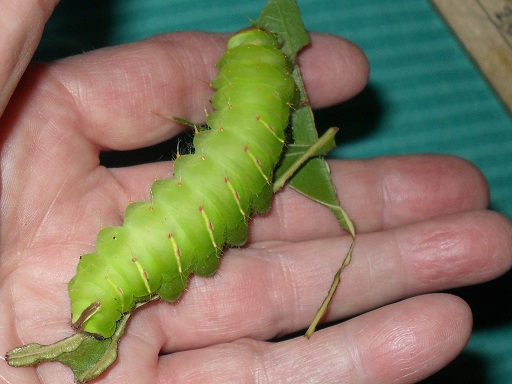
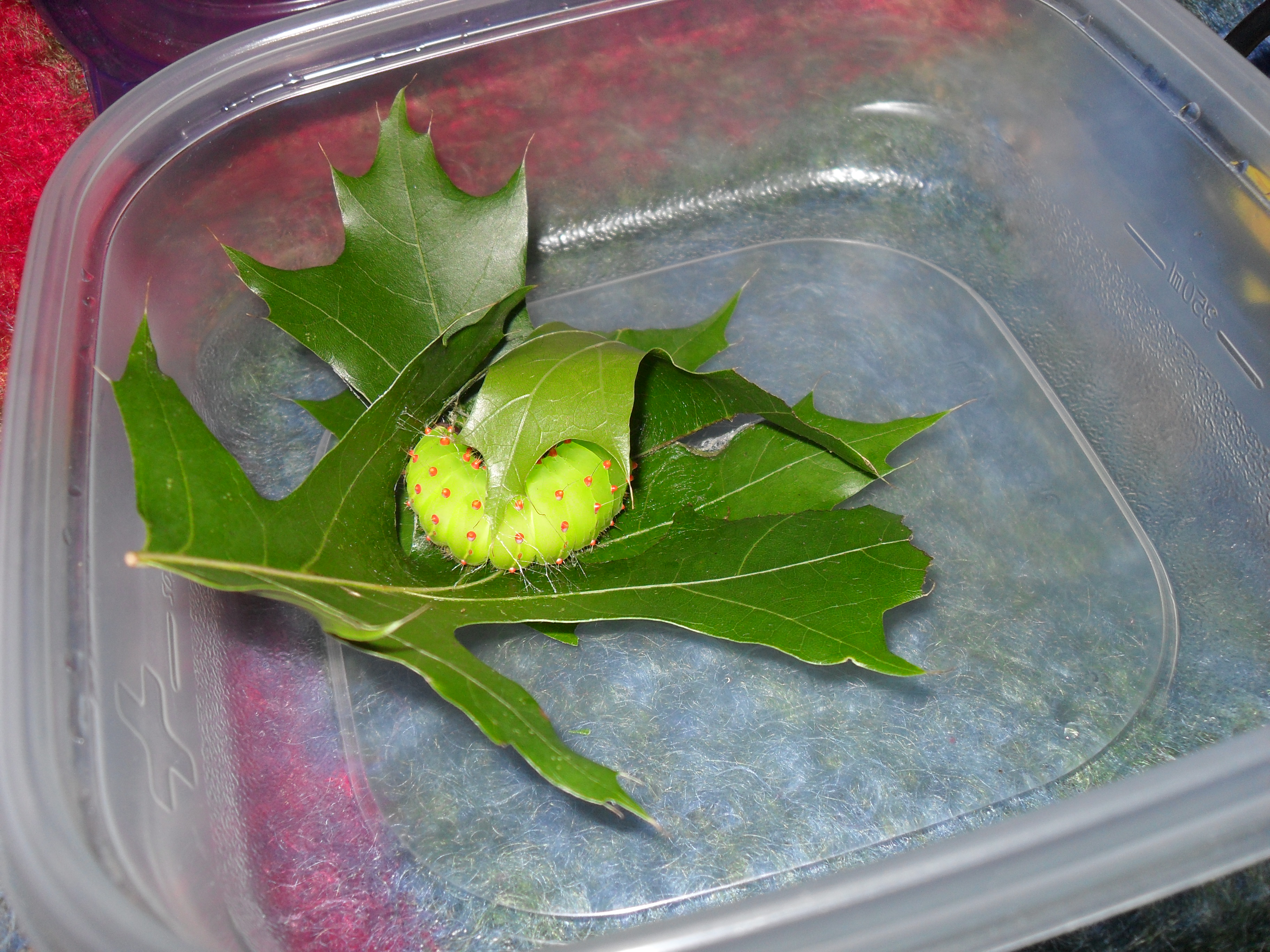
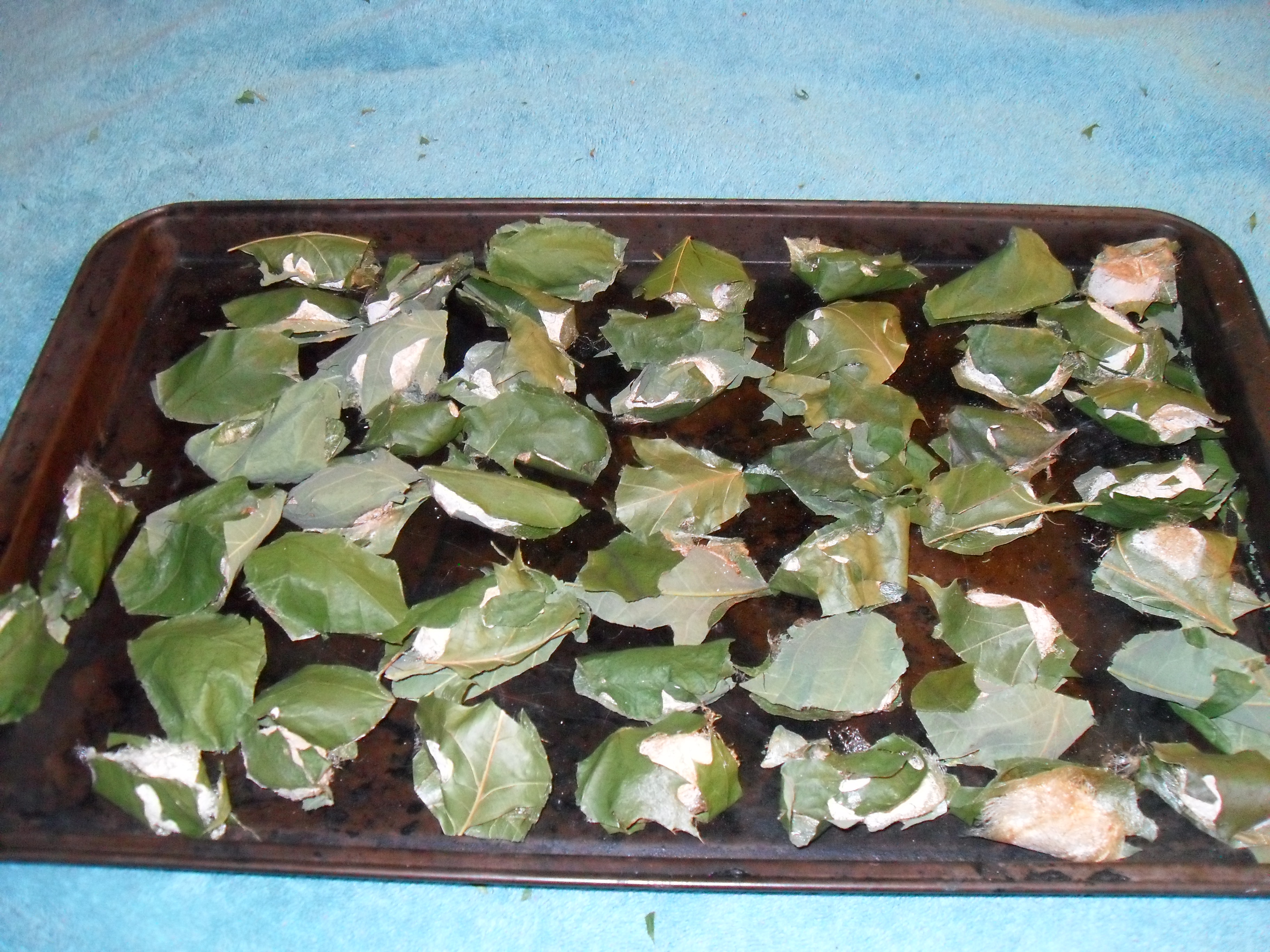
 polyphemus female
polyphemus female
Back to main menu
copyright Martha O'Kennon 2020






























